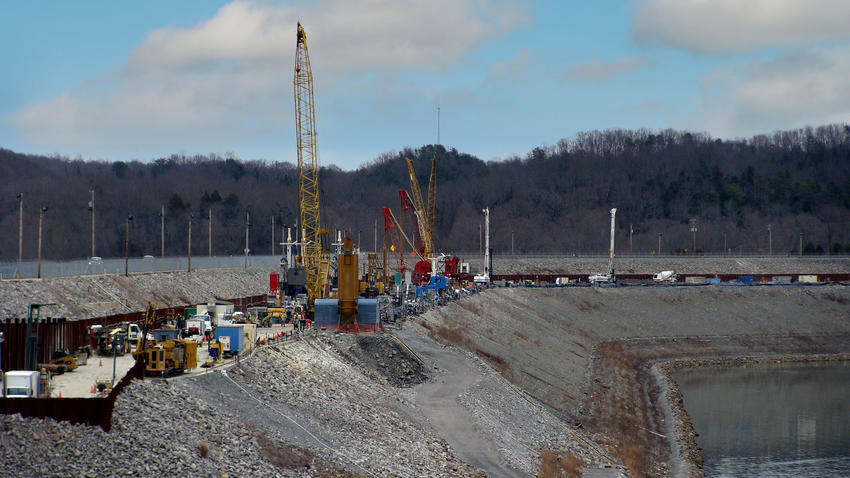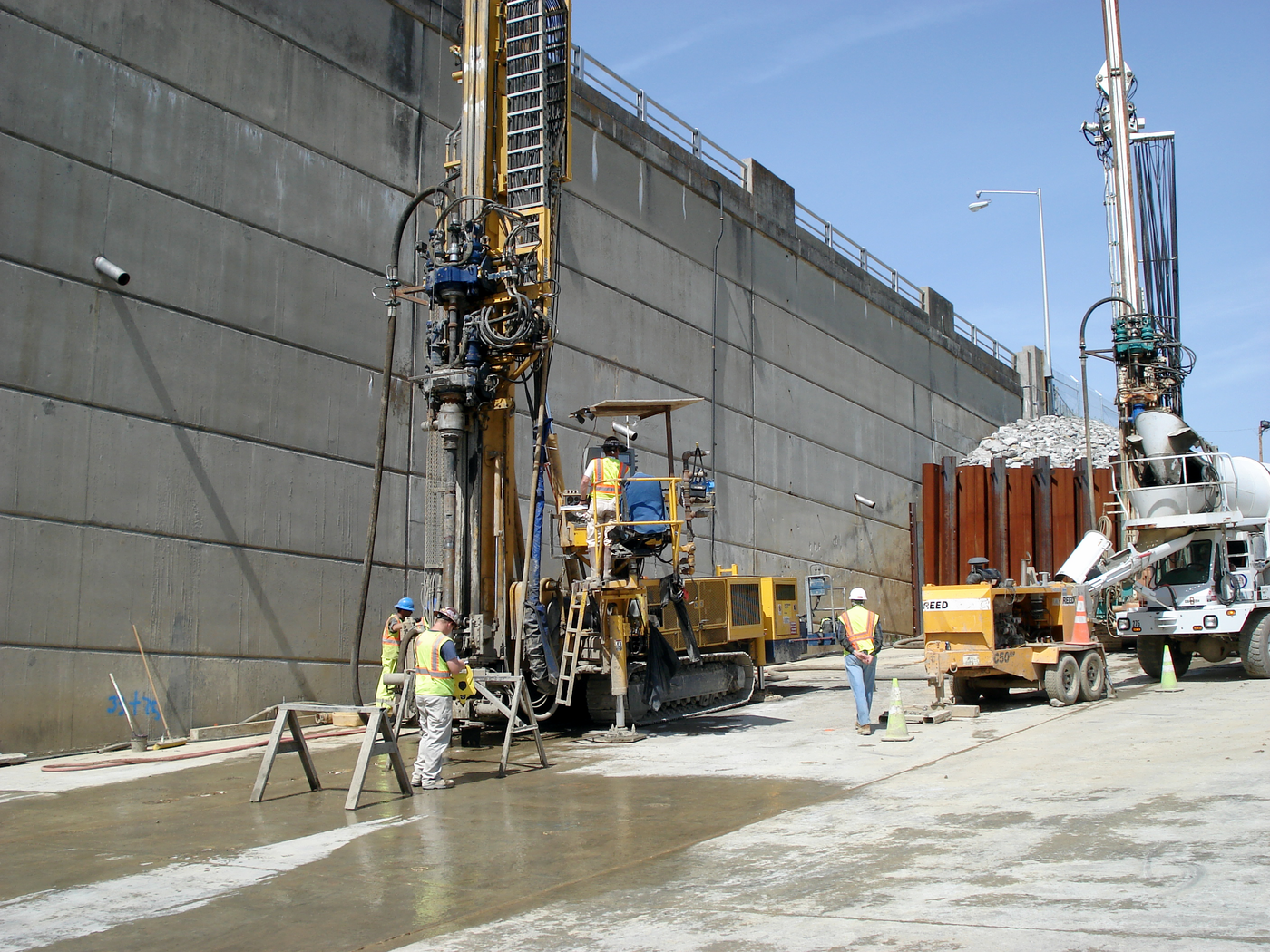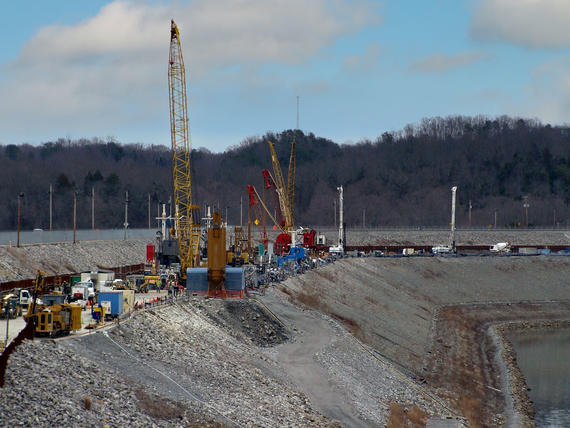Wolf Creek Dam, completed in the late 1950s, is comprised of a 1,796-ft-long concrete gravity section and a 3,940-ft-long earthen embankment section, founded on karstic limestone.

The project
The Dam can hold back 6-million-acre-ft of water at full reservoir level, making it the largest reservoir by volume in the eastern US and the ninth-largest pool by volume in the entire US.
Between 1967 and 2005, several significant mass rock grouting projects were undertaken to remediate internal erosion due to seepage through the karstic bedrock. A concrete cut-off wall was installed between 1975 and 1979. By 2005, however, further deterioration led to the USACE designating the dam as a high risk for failure. A further grouting program was undertaken, beginning in 2007, and subsequently, a joint venture (JV) of TreviIcos and Soletanche was awarded a contract to install a larger, deeper cut-off wall, along with extensive grouting to facilitate safe construction of the cut-off and extend its influence. The grouting sub-contract was awarded to Keller and work began in 2009.
The challenge
Several challenges had to be addressed during the grouting program:
- The majority of the work was conducted from a 50-ft wide custom-built platform located on the upstream side of the dam, with designated individual work areas that were limited and tightly restricted.
- Multiple other trades working concurrently with the grouting crews meant that the platform was extremely congested, requiring heightened safety awareness at all times.
- Drilling and grouting was technically challenging due to the extreme sensitivity of the dam embankment to grouting pressures. Careful monitoring of pressures and reaction times was paramount.
The solution
The 5-step sequential grouting program included:
- Pre-grouting using low mobility grouting to strengthen the embankment soils and directly treat potential problem zones at the interface of the soils and foundation rock ahead of the cut-off wall installation.
- Installation of a double-line grout curtain in the main dam embankment using high mobility grouting. The grout curtain was installed 12 ft upstream and 12 ft downstream of the cut-off barrier. The grout curtain extended up to 325 feet below the dam crest to allow treatment to 50 ft beneath the bottom of the planned deeper cut-off wall. This phase also completed the existing grout curtain initiated in a previous remediation phase.
- Single-line high mobility curtain grouting on the right rim of the dam where there was generally less than 40 ft of overburden to extend the cut-off and provide adequate remediation.
- Grouting in a fan array to target the interface between the concrete gravity section and the earthen embankment.
- High mobility curtain grouting in several areas designated as critical where modified drilling and grouting techniques were utilized to address cavernous clay- and alluvium-filled voids.
For the majority of the grouting work, standard sonic drilling was used to advance temporary casing 2 ft into the underlying rock formation. However, in the designated critical areas alternate methods were evaluated due to the highly sensitive cavernous conditions. Ultimately, the modified procedure included vertical drill holes and downstage sonic drilling and grouting, elimination of water testing, the limiting of grouting pressures, and standard grout mixes.
Keller used a fully automated monitoring and grouting process system that allowed for a carefully controlled grouting process and prioritized information review to maintain the safety of the dam throughout the process. Over the course of the 2-year program, approximately 274,000LF of embankment and rock drilling was accomplished, with grout injected on the order of 375,000 gallons.

